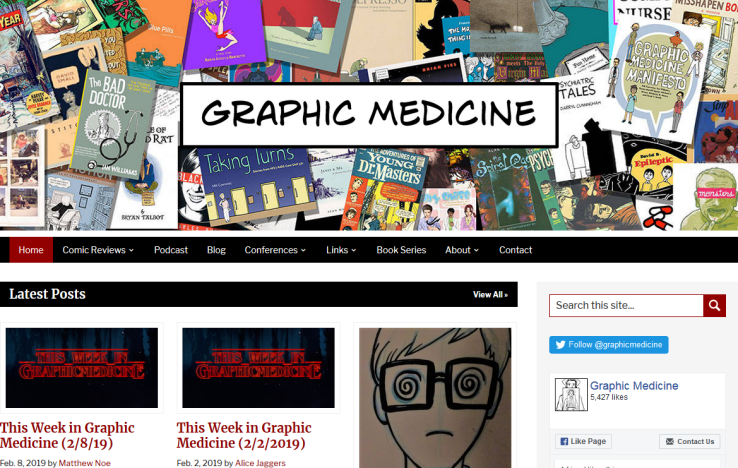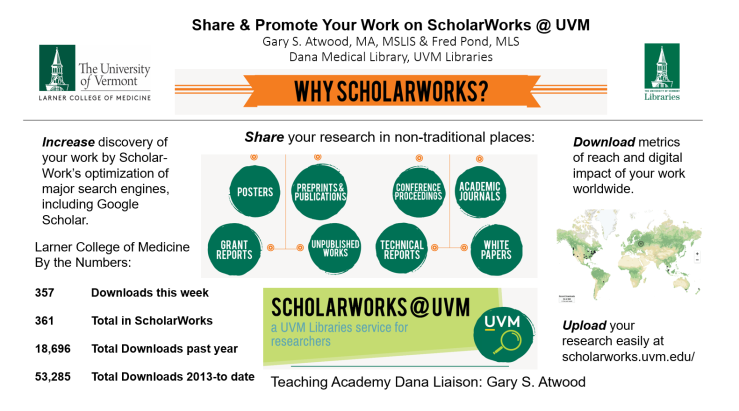Library Tab Now Available in myUVM
Dana resources are now available for students via a convenient tab on myUVM! This tab provides access to a select set of resources in a convenient place. When you log onto myUVM, you will see a link to the library, similar to this:

By clicking on this link, you will have access to all 3 UVM Libraries – Dana Medical Library, Howe Memorial Library, and Silver Special Collections. There will be icons for each library that will take you to resources specific to that library. Basic search tools are available here like CATQuest, Research Guides, Research RoadMap, and Find a Journal.
For Dana, you have direct access to our Interlibrary Loan Services, Course Reserves, the ability to request a meeting with a librarian, and library hours and directions. If you have questions or need assistance, contact Gary Atwood.
Online Zotero Tutorials are Now Available
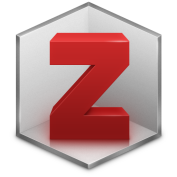
Zotero is a research assistant tool that helps you collect, organize, cite, and share research. Dana now has easy-to-use online tutorials that show you how to install Zotero, add and organize references, set up Zotero groups, and use Zotero with Microsoft Word. Check out the Dana Medical Library Tutorial page to learn more. Questions? Contact Gary Atwood.
Printing from Laptops, Smartphones or Desktops

Users now have the ability to print from any device by simply uploading documents to the Pharos Print Center via a web browser or smartphone.
To begin, login to the Pharos Print Center with your UVM NetID and password. Then upload your documents from your browser or smartphone. In the print center, you can see your balance, specify black & white or color printing, page range and the number of copies. In addition, you can view your printing activity, delete print jobs and see a print preview. Then print and pay for your jobs at any one of the print stations in the Dana Medical Library, Howe Library, or at the CATCard Service Center. Note that unprinted documents are purged after 2 hours. For questions, contact Library Technology Services.
Reporting Problems with Electronic Resources

If you find yourself having trouble getting access to a database, e-journal, e-book or other electronic resource, please let us know! Fill out our form to report the issue. This form can be found under the “Services” tab at the top of the page. It will ask important questions, such as your location (on or off campus) and what type of resource you are trying to use. This information will help us determine the cause of the problem and if it may be affecting other users as well. If you are unsure of how to fill out the form, or have additional questions you’d like to discuss, feel free to reach out to a librarian for help. You can chat with us, email us or give us a call to try to figure out why the resource you are trying to use isn’t working.
While we do our best to provide seamless electronic access to our materials, sometimes things do go wrong. Your help in reporting errors allows us to find and resolve these issues more quickly! Thank you for your help!
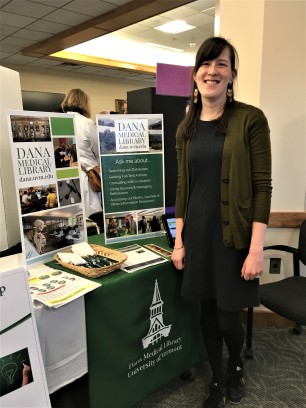






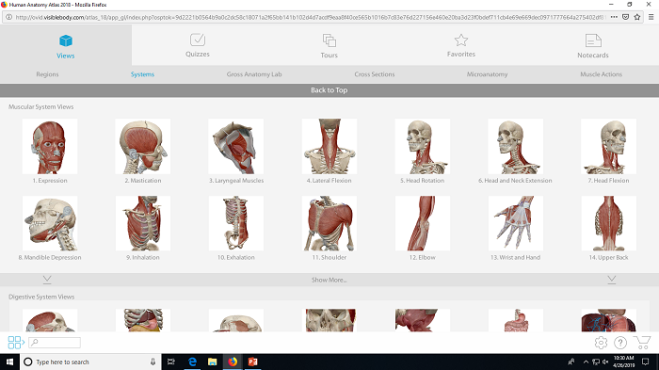
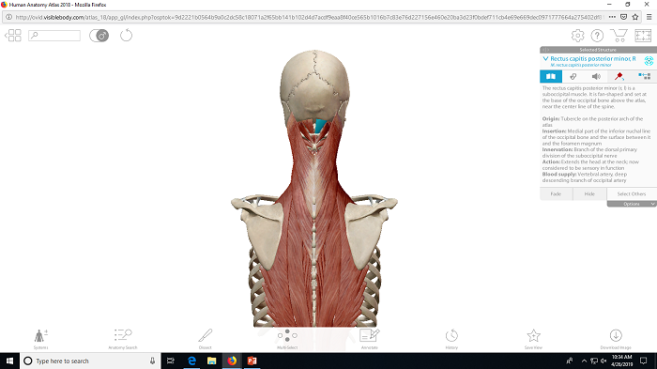

 In partnership with the Graduate Writing Center, Dana offered a drop-in Graduate Writing Clinic at the library, Mondays 2:30-4:30 and Tuesdays 3:30-5:30 during the Spring 2019 semester. Consultant Alyssa Jones (Communication Sciences and Disorders) was available to meet with individual writers and writing teams on a full range of projects (course assignments, dissertations and capstones, proposals, personal statements, oral presentations and more) and at any stage of the composing process. Whether students dropped in with a quick fifteen-minute question or for a longer consultation, the service was provided free to all UVM graduate students.
In partnership with the Graduate Writing Center, Dana offered a drop-in Graduate Writing Clinic at the library, Mondays 2:30-4:30 and Tuesdays 3:30-5:30 during the Spring 2019 semester. Consultant Alyssa Jones (Communication Sciences and Disorders) was available to meet with individual writers and writing teams on a full range of projects (course assignments, dissertations and capstones, proposals, personal statements, oral presentations and more) and at any stage of the composing process. Whether students dropped in with a quick fifteen-minute question or for a longer consultation, the service was provided free to all UVM graduate students. 